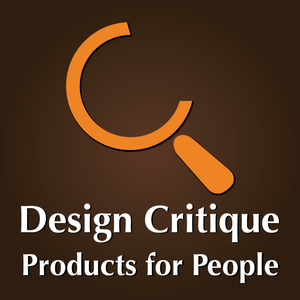
Design Critique: Products for People
Timothy Keirnan
All episodes
Best episodes
Top 10 Design Critique: Products for People Episodes
Goodpods has curated a list of the 10 best Design Critique: Products for People episodes, ranked by the number of listens and likes each episode have garnered from our listeners. If you are listening to Design Critique: Products for People for the first time, there's no better place to start than with one of these standout episodes. If you are a fan of the show, vote for your favorite Design Critique: Products for People episode by adding your comments to the episode page.

DC53 Design of the DeWalt Worksite Radio with Brian Matt of Altitude, Inc.
Design Critique: Products for People
01/21/09 • 51 min

DC61 4th Anniversary Episode: Talking Design with Michael Graves and Tony Hron
Design Critique: Products for People
08/06/09 • 44 min

DC63 Interview: Jeremy Keith at UI13 on Ajax Design Considerations
Design Critique: Products for People
09/29/09 • 51 min

DC62 Critique: EFI-X V1 Hackintosh Boot Processing Unit-The Good, Bad, and Ugly
Design Critique: Products for People
09/03/09 • 61 min

DC57 Interview: Neuro Web Design with Dr. Susan Weinschenk
Design Critique: Products for People
05/02/09 • 30 min

DC58 Interview: Jim Jacoby on UX and Business Leadership Opportunity at IUE2009
Design Critique: Products for People
05/18/09 • 17 min
Show more best episodes

Show more best episodes
FAQ
How many episodes does Design Critique: Products for People have?
Design Critique: Products for People currently has 130 episodes available.
What topics does Design Critique: Products for People cover?
The podcast is about Interview, Design, Research, Human, Podcasts, Arts and Business.
What is the most popular episode on Design Critique: Products for People?
The episode title 'DC137 Critique: The Brilliant Mundane of the E-SDS KVM Switch' is the most popular.
What is the average episode length on Design Critique: Products for People?
The average episode length on Design Critique: Products for People is 44 minutes.
How often are episodes of Design Critique: Products for People released?
Episodes of Design Critique: Products for People are typically released every 36 days, 20 hours.
When was the first episode of Design Critique: Products for People?
The first episode of Design Critique: Products for People was released on Jan 7, 2009.
Show more FAQ

Show more FAQ